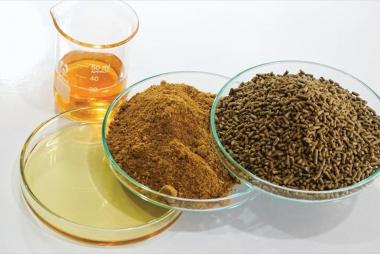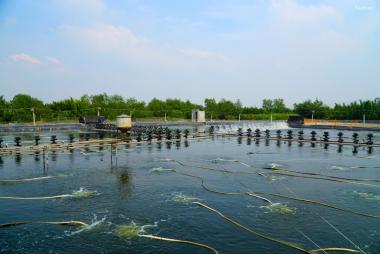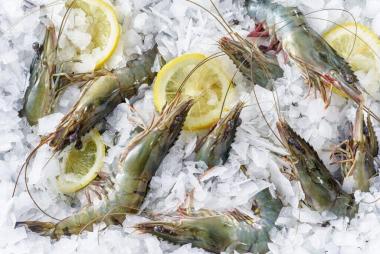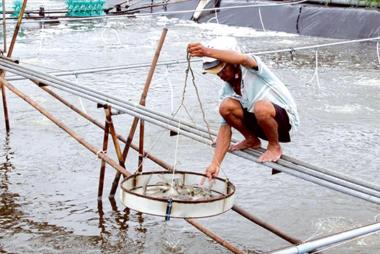The shrimp–mangrove farming model, in which shrimp are farmed under mangrove forest canopies, has been expanding strongly across coastal provinces in the Mekong Delta such as Ca Mau, Bac Lieu, An Giang, Can Tho, and Vinh Long. This is a sustainable aquaculture approach that not only protects mangrove forests, but also supports climate change adaptation and provides stable livelihoods for local communities.

Mangroves: Natural filters and multi-income ecosystems
Mangrove ecosystems act as natural water filtration systems, helping to:
- Improve water quality
- Reduce disease risks
- Lower environmental treatment and waste management costs
Under the mangrove canopy, farmers do not rely on shrimp alone. They also generate income from crabs, fish, and blood cockles, creating a diversified and more resilient income structure.
However, the model still faces several challenges:
- Water pollution caused by the decomposition of large volumes of mangrove leaves
- Lack of suitable seedstock tailored to shrimp–mangrove conditions
- Inconsistent farming techniques between households and regions
Addressing these issues is critical to fully unlocking the potential of the shrimp–mangrove model.
Support from government and international organizations
To improve the effectiveness and sustainability of shrimp–mangrove farming, government agencies and international organizations such as IUCN have been actively involved in:
- Providing technical training on farming and environmental management
- Supporting the supply of quality seedstock
- Organizing farmer workshops and community dialogues
Thanks to these efforts, many shrimp–mangrove farming households have successfully obtained international certifications, including:
- ASC (Aquaculture Stewardship Council)
- BAP (Best Aquaculture Practices)
- EU Organic
In Ca Mau Province alone, nearly 22,000 hectares of shrimp–mangrove farms have been certified, helping to build a strong reputation for environmentally responsible and organic shrimp.
Enterprise involvement in value chain development
Enterprises such as MINH PHU GROUP IMPORT EXPORT TRADING COMPANY LIMITED play a vital role in:
- Linking farmers into integrated value chains
- Developing internationally certified farming zones
- Enhancing the commercial value and branding of shrimp–mangrove products
- Meeting strict requirements on environmental protection and traceability from international buyers
Through these partnerships, the shrimp–mangrove model is transformed from a traditional practice into a market-oriented, high-value production system.
Strategic direction for Vietnam’s sustainable aquaculture
The shrimp–mangrove farming model is widely regarded as a strategic pathway for sustainable aquaculture development in Vietnam. By combining:
- Forest conservation
- Climate change adaptation
- Organic and eco-certified production
this model contributes to building and promoting the brand of Vietnamese organic shrimp in global markets.
As demand for sustainable, traceable, and eco-friendly seafood continues to grow, shrimp–mangrove farming will remain a key pillar in strengthening Vietnam’s position as a responsible aquaculture producer.
Translation from VIBO news. Author of Vietnamese article: Adapted from VASEP (seafood.vasep.com.vn).















